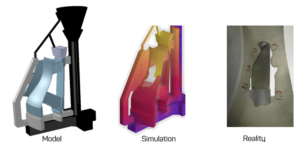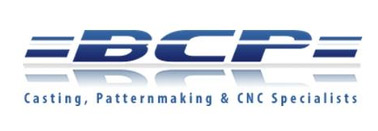Designing castings for manufacturing as well as functionality
This customer case was originally initiated by Voxeljet.
Since 2015, Brooks Crownhill Patternmakers (BCP) have been using NovaFlow&Solid as an agile casting simulation solution for their modern foundry in the South of the UK. They have the experience and knowledge to meet a wide range of requirements for low pressure die, gravity die and sand casting.
For a lot of automotive parts, BCP counts on prototypes produced using 3D sand printing well before they are ready for series production. Equally important for BCP is casting simulation software NovaFlow&Solid, which allows to verify every complicated design and technology before printing the mold. By simulating the pouring and solidification processes, we can analyze functionality of gating and feeding system and risk assessment of casting defects such as cold flows, inclusions, gas or shrinkage porosity and many others factors. This results in obtaining a high-quality casting from each printed mold.
Casting simulation and additive manufacturing allow end users to thoroughly inspect and extensively test the newly designed components before the production tools are manufactured. This saves a massive amount of time and money.
So-called lightweight design is one of the most important design trends of recent years. Customer designs are being pushed further and further to the limits of manufacturability: thinner wall sections of the entire casting and higher tolerance bands for positional accuracy. “3D sand printing is therefore irreplaceable. Not only because it allows us to realize geometries that would not be possible using conventional processes such as milling or core shooting, but especially when we want to test brand new designs, we need the optimized prototypes quickly. We can then take a close look at these with specific integrity tests (NDT, Non-Destructive Testing) before we give the go-ahead for series production,” says Sales Director and Casting expert Mr Lee Henderson.
Designed for manufacturing versus designed for functionality
Greater latitude in the design of 3D printed sand molds is closing the gap between “design for manufacturing” and “design for functionality”, says Henderson: “Today, engineers can use finite element analysis (FEM) to optimize functionality and then directly 3D print the designs. This makes the design of engine parts, for example, a lot faster and, more importantly, the components are stronger, which in turn allows drastic weight reductions. This is extremely attractive, especially in the wake of current environmental regulations such as lightweight construction, and the associated energy savings.”
Technical input from NovaCast on thin-walled parts
Technical input and what distinguishes the NovaCast product is the numerical Finite Volume Method (FVM; also called Control Volume Method, CVM) especially useful for thin-walled parts. It is one of the best numerical methods on the market to meet the high requirements that constructors and customers have, such as short calculation time, good results and precise mapping of the casting part. Additionally, NovaFlow&Solid uses irregular mesh in mold, in combination with FVM.

This comes with excellent results in a short calculation time. Here is a good example thin-walled parts and how precise the results are and how accurate the predictions of cold flow are:


